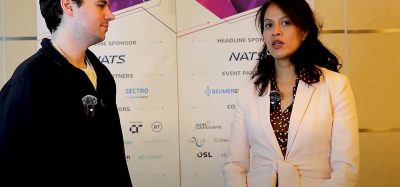Enhancing passenger experience through technological innovation
- Like
- Digg
- Del
- Tumblr
- VKontakte
- Buffer
- Love This
- Odnoklassniki
- Meneame
- Blogger
- Amazon
- Yahoo Mail
- Gmail
- AOL
- Newsvine
- HackerNews
- Evernote
- MySpace
- Mail.ru
- Viadeo
- Line
- Comments
- Yummly
- SMS
- Viber
- Telegram
- Subscribe
- Skype
- Facebook Messenger
- Kakao
- LiveJournal
- Yammer
- Edgar
- Fintel
- Mix
- Instapaper
- Copy Link
Posted: 9 September 2024 | Steve Tukavkin | No comments yet
For Issue 2 2024, Steve Tukavkin, Vice President of IT and Digital at JFK International Air Terminal, discussed the innovative technologies JFKIAT has been implementing behind the scenes at the airport to continuously enhance the passenger experience.
If you prefer, why not listen to this interview?
JFK T4 passengers can now navigate to places within the terminal with Google Indoor live view. How does it work?
Google Indoor live view is an interactive tool accessed through Google Maps and uses the passengers’ camera, live feed and augmented reality to point them in the right direction. It enables travellers to navigate a large terminal to find the closest restrooms, lounges, taxi stands and more.
It’s an awesome technology from Google called global localisation. It uses artificial intelligence (AI) to scan billions of different images that are stranded together to help determine the precise altitude and the placement of objects within the building. It then provides the right directions on the passenger’s smartphone and helps them navigate to the chosen destination within a terminal. These recordings are compared with the background on the passengers’ cameras on their smartphones to show the correct route in augmented reality (AR) view. It was a massive undertaking to get this implemented and took about two years in partnership with Google to focus on enhancing the intuitive navigation from curb-to-gate. Google came in and recorded the interior and exterior of the airport terminal for the new indoor live view function.
Why is auto bag drop and next generation kiosks a game changer for the passenger experience?
With Amadeus next gen kiosks, T4 passengers can check in and print their bag tag at any of the 96 kiosks that are being implemented at the moment. Immediately after, passengers can drop their bags in a matter of seconds at one of the 42 series seven auto bag-drop units that have been deployed. This self-service technology is equipped with biometric functions that enable a smooth and efficient passenger flow through the terminal.
We began a soft launch of the biometrics at a number of self-service bag-drop units only a couple of weeks ago. It’s an opt-in solution to automate the TSA required ID verification that airlines must perform before passengers induct their luggage. When a passenger opts-in, they utilise biometrics at the bag-drop and the passenger can use facial recognition against the CBP traveller verification system to identify who they are, without having to scan their boarding pass to initiate the transaction at the bag-drop. This is an implementation at T4 in trial with the TSA to test the efficiency of the process of our bag-drop devices, which will ultimately optimise the passenger throughput at the bag-drop and create a smooth and efficient passenger flow.
To optimise passenger flow capacity and automation at the security checkpoints, JFKIAT has deployed Synect’s ReadySeeGo® solution to develop custom digital content. Talk us through this and the information it displays.
We worked with the Synect team to introduce 11 ReadySeeGo digital communication totems at the first and fourth floor security checkpoints, to provide a more engaging and efficient process part of this project. We also deployed five displays at the upgraded checkpoints powered by Synect’s Passenger360® visual communication platform that displays the estimated wait times, the automated screening lane instructions and divestment reminders.
It helps the passenger prepare for the security checkpoint process but also engages them in an efficient and automated way, providing them with clear direction in terms of queue guidance to real-time TSA estimated wait times, resulting in a more enjoyable passenger experience when they get through the security checkpoint. I also think it’s a friendly way to provide visual cues at the totems to help remind passengers that don’t travel often to have their travel documents ready, and highlight prohibited items they may have in their bags before they go through the security checkpoint.
While people are waiting in queue, the eye‑catching animations provide increased engagement with a little bit of entertainment as well. Synect provides different types of campaigns and visual messaging, which is seasonal. For example, during St Patrick’s Day they changed some of their imagery to greener. And lastly, there’s scenario based additional content such as emergency messaging that can be easily activated if we require it to do so.
It also helps reduce processing times and the need for repeated instructions from some of the security personnel.
These innovations are a response to changing passenger behaviours. What changes are you seeing with passengers and their behaviours, their wants and needs, and what do these innovations say about them?
That’s a great question. At T4 we’re delivering a best‑in-class passenger experience from curb to gate and that’s one of our highest priorities. We naturally want to reduce stress and anxiety throughout the entire process. So, we’ve implemented a robust mix of different innovative technologies to make time in the terminal more enjoyable given that our passengers desire a more seamless travel experience.
Certainly, our new digital technologies have provided them with the information at their fingertips but also enhance the passenger check-in process and that’s been one of our big focus areas in the departures lobby.
We’ve also identified several different passenger profiles or personas and we’re working on a variety of different solutions to allow us to assist as many of those passenger types as possible. We’re looking at a new passenger experience platform along with self‑service units to bring a number of other isolated technologies together to ensure passengers get the relevant information in a fast and friendly manner. Essentially, more personalised way finding and journey mapping regardless of who they are and or which questions they may have. This technology enables us to map each passengers’ journey within the terminal to meet their individual needs.
On the airside you’ve implemented AI software, how is this helping your grand handlers and helping you to reduce delays?
We deployed this software several years ago in an early pilot. It provides our operations team, as well as our airlines and ground handlers, full visibility and control of the whole aircraft turnaround management process, which in turn helps improve on time flight performance. We use a sales predictive off block time technology to optimise on time arrival, gate availability and alert the ground handlers in real time. This innovative algorithm considers the aircraft model, the landing site, the weather conditions, the number of passengers along with real-time data around the situation on the apron for optimal efficiencies. Our block time enhances productivity and helps ensure there’s no delays in a timely manner. At the end of the day, it’s allowing for an increased level of assurance when it comes to employee safety as well as passenger comfort and punctuality. We’re in the process of expanding the aircraft turnaround management solutions for all the common-use gates with additional safety events as well. We’re also in the process of finalising a business case to extend it further. So we see lots of value from this technology moving forward and the more gates it’s deployed on, the more value we get from it because it is increased visibility end-to-end.
What technologies do you think will be key to being able to handle an increase in passenger footfall and increase your capacity without increasing the square footage of your terminal in the future?
We recently implemented several other new technologies (in addition to our common-use passenger processing services technology) with the aim of elevating the traditional check-in process.
Moving to this new Amadeus ACUS platform means that check-in no longer has to be done at a fixed location. This technology can be moved around at a variety of different locations and JFKIAT continues to deploy our common-use self-service on a second last ticket row. As I mentioned, these technologies help maximise the volume of passengers in the already busy terminal and expect to provide at around 1.5 times more capacity once completed. This is massive for us. In addition, we continue to invest in our passenger flow management to leverage new AI. This new platform uses lidar sensors to help with enhancing the journey from curb through to the security checkpoint to reduce the terminal queues. Essentially, we use this technology with TSA today in partnership, while we also plan to use it at CBP for the immigration hall area.
We use this data to understand passenger processing metrics prior to the deployment of common-use self‑service as well. Also, we are seeing faster transaction times at the new self-service check-in compared to the traditional check-in process that we had previously. In addition, the lidar data is integrated into a new predictive modelling and AI platform which helps us forecast passenger volumes. Arrival profiles and anticipated peak times help our government agencies to deploy staff more effectively to prevent queuing in both the security checkpoints and hopefully soon in the immigration hall.
The more we leverage data, the better it is not only within the organisation, but also collaboratively with all of our government agencies and external stakeholders.
About the author
Steve Tukavkin, Vice President IT and Digital, leads the IT & Digital department for Terminal 4, which delivers Information and Communication Technology services that support all aspects of the terminal’s IT operations, security systems and business solutions. Mr. Tukavkin spearheads strategy around implementing new technology initiatives, including those in the cyber security and business intelligence space, while helping T4 adopt digital technologies such as digital signage and self-service kiosks & auto bag drops. As a seasoned IT executive with over 20 years of experience, Mr. Tukavkin previously worked at Brisbane Airport Corporation in Australia, serving as a technology and architecture manager. Prior to this role, he worked with the Royal Schiphol Group in Amsterdam.
Issue
Related topics
Artificial intelligence (AI), Baggage handling, Capacity, Innovation, New technologies, Operational efficiency, Passenger experience and seamless travel, Security, Self-service, Workforce
Related airports
Related organisations
Amadeus, Google, JFK International Air Terminal LLC (JFKIAT), Synect, Transport Security Administration (TSA)



















